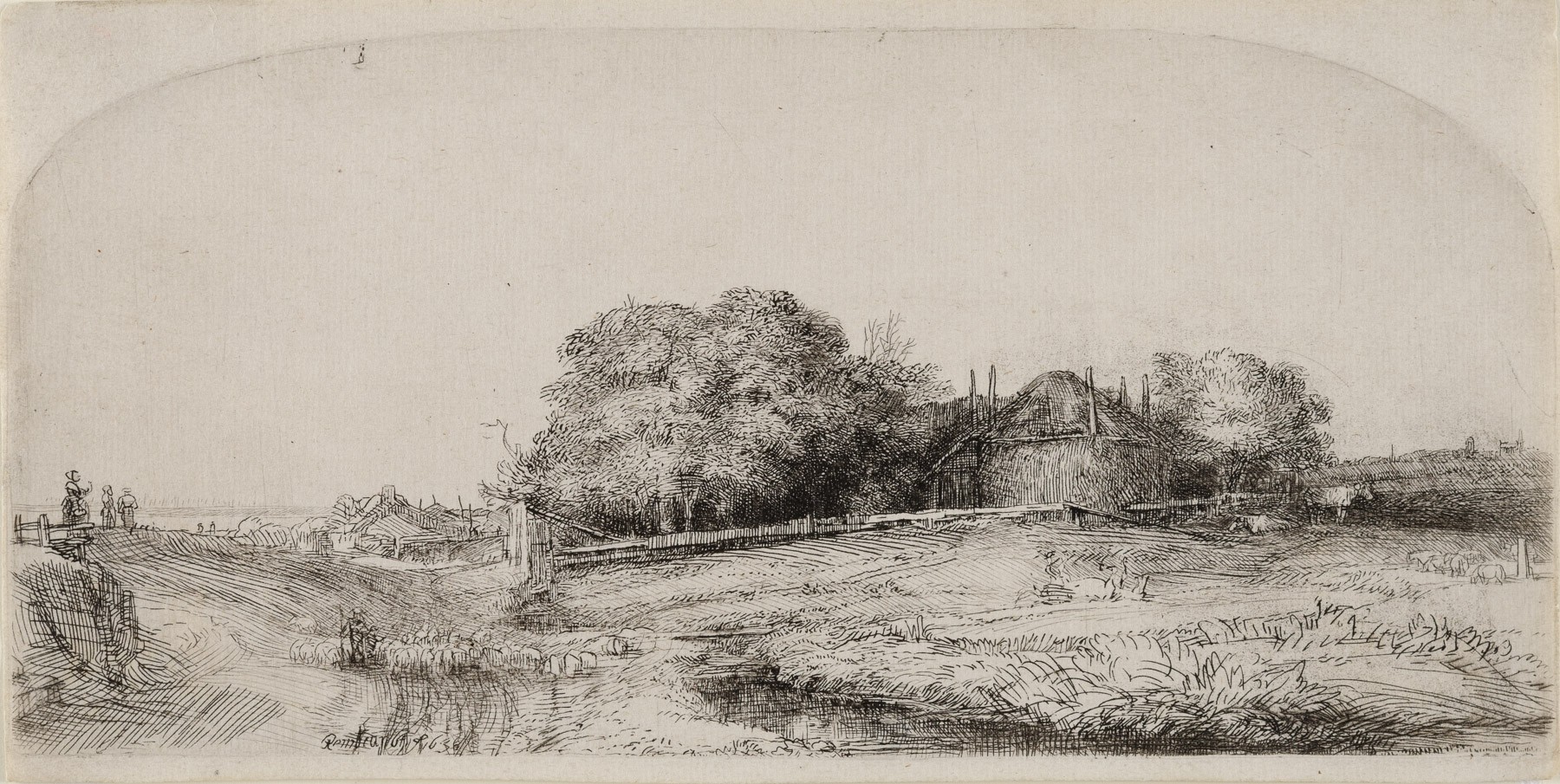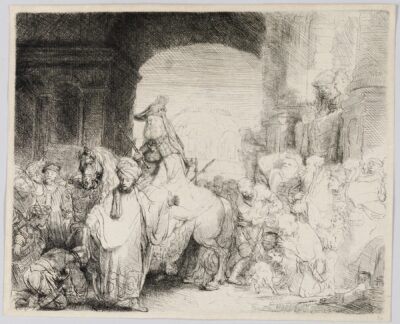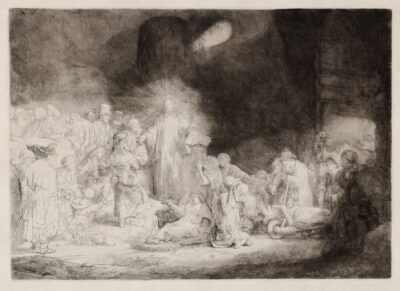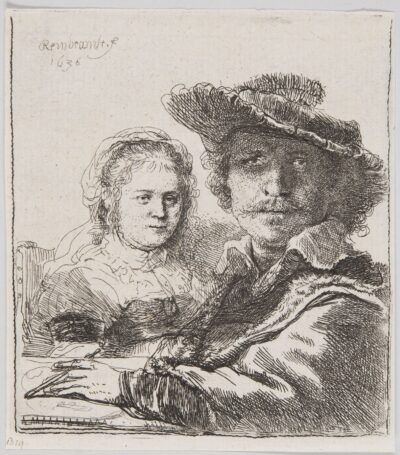Cottage and Haybarn on the Diemerdijk with a Flock of Sheep
Rembrandt Van Rijn
Cottage and Haybarn on the Diemerdijk with a Flock of Sheep
etching & drypoint
1650
An original Rembrandt Van Rijn etching & drypoint print.
1650
Original etching and drypoint printed in black ink on laid paper.
Signed and dated in the plate lower right Rembrandt f. 1652 (the “d” reversed).
A strong, clear 17th century/lifetime impression of Bartsch, Usticke and New Hollstein’s second and final state of this very rare etching, (characterized by G.W. Nowell-Usticke in his 1967 catalogue Rembrandt’s Etchings: States and Values as “a scarce, attractive arched print,” and assigned his scarcity rating of “R+“ [75 to 125 impressions remaining extant in that year], printed after the addition of the distant horizon at the far left and the dead branch to the left of the trees in the center, with touches of burr in the lower right foreground and in the shadows of the center trees.
Catalog: Bartsch 224 ii/ii; Hind 241; Biorklund-Barnard 52-A; Usticke 225 ii/ii; New Hollstein 254 ii/ii.
3 ¼ x 6 7/8 inches
Sheet Size: 3 9/16 x 7 inches
In this etching the haystack of this small farm on the outskirts of Amsterdam is the focal point: the main building lies almost hidden behind the tall trees and the hayrick. Running the entire length of the property is a fence, separating the grounds from the meadow where a few cows can be seen along with a horse rolling in the grass. Below on the under-dyke road a flock of sheep amble past while behind them, beyond the entrance gate we recognize the cottage that lies at the end of lake Braak parallel with the dyke. On the horizon to the right three buildings are indicated which seem to resemble in their grouping the church at Ouderkerk, the tavern called Het Molentje (The Little Windmill) on the river Amstel, and the spire of Amstelveen church.
This print is one of a group late landscapes etchings in which the artist portrays intimate landscapes in a carefully orchestrated middle range of tones. The small, concentrated composition, focusing on a single farmstead with only a brief sketch of a nearby cottage and the briefest pictorial suggestion of a distant town and the far horizon, was drawn with the etching needle. Rembrandt then worked in drypoint on the plate. The processes are so subtly integrated that they are virtually indistinguishable. The resulting print is an image of great tonal precision and uniformity with soft, atmospheric modulations of shadow.





